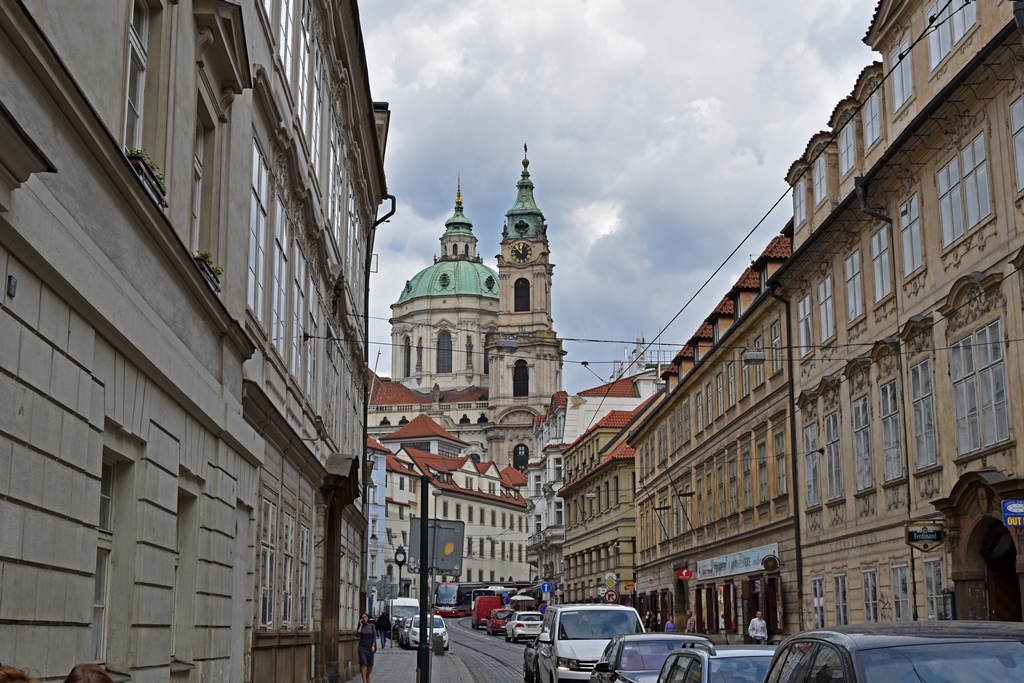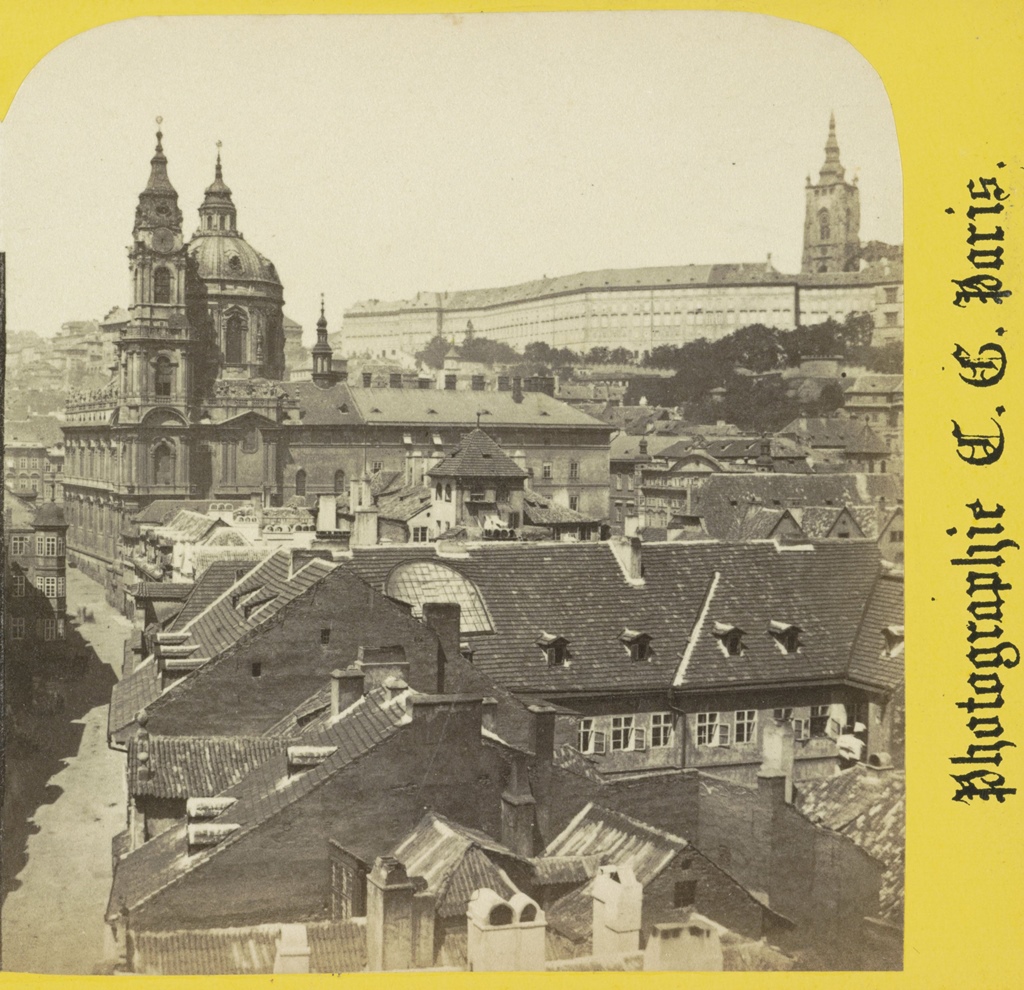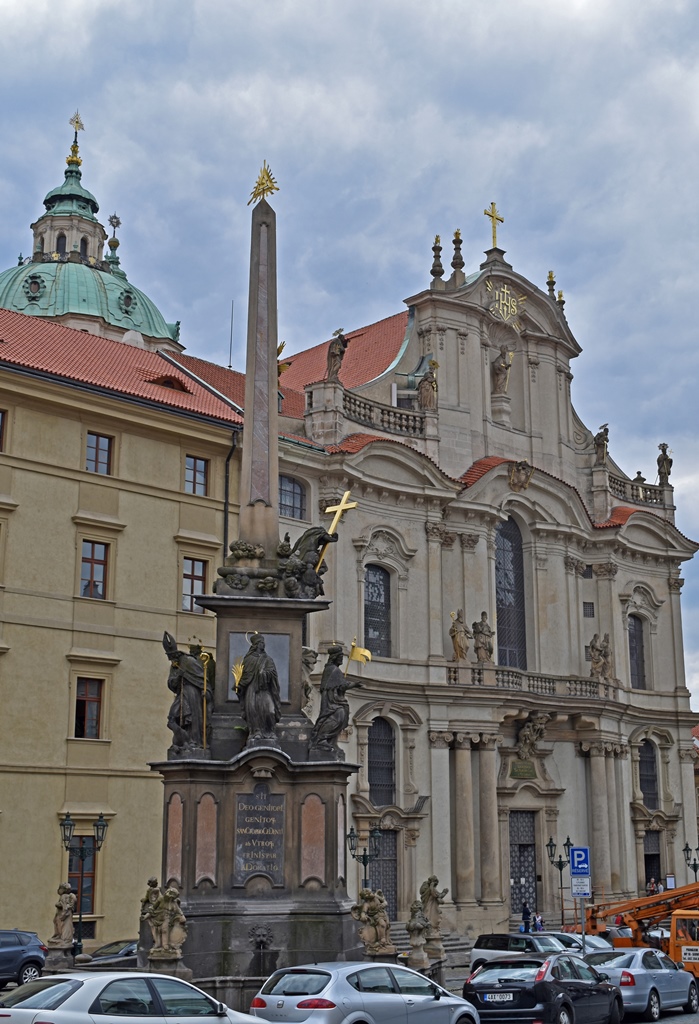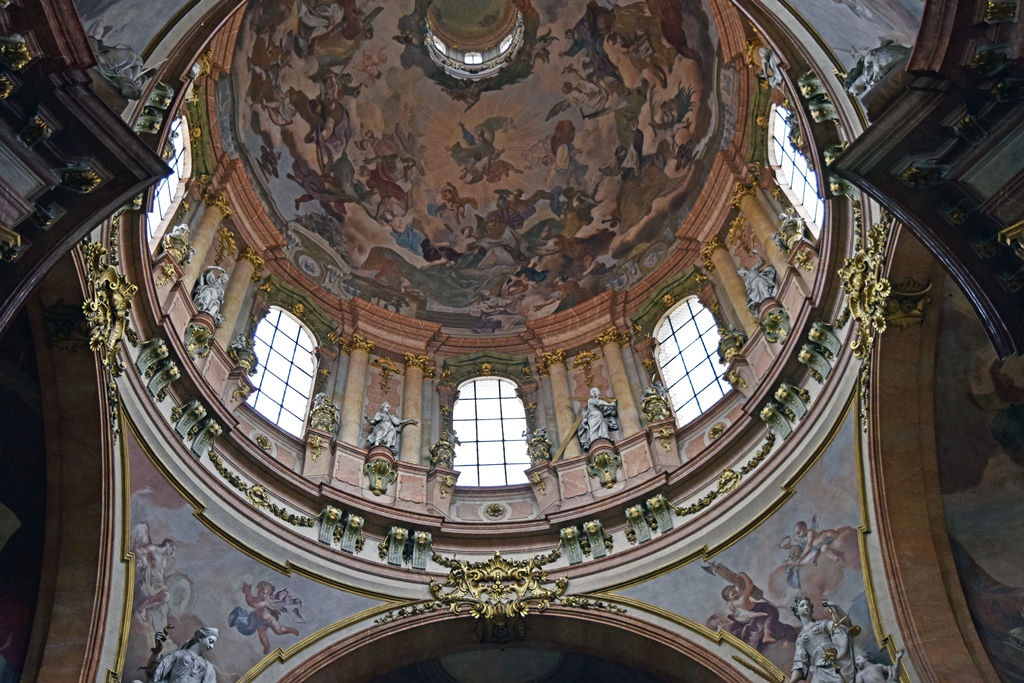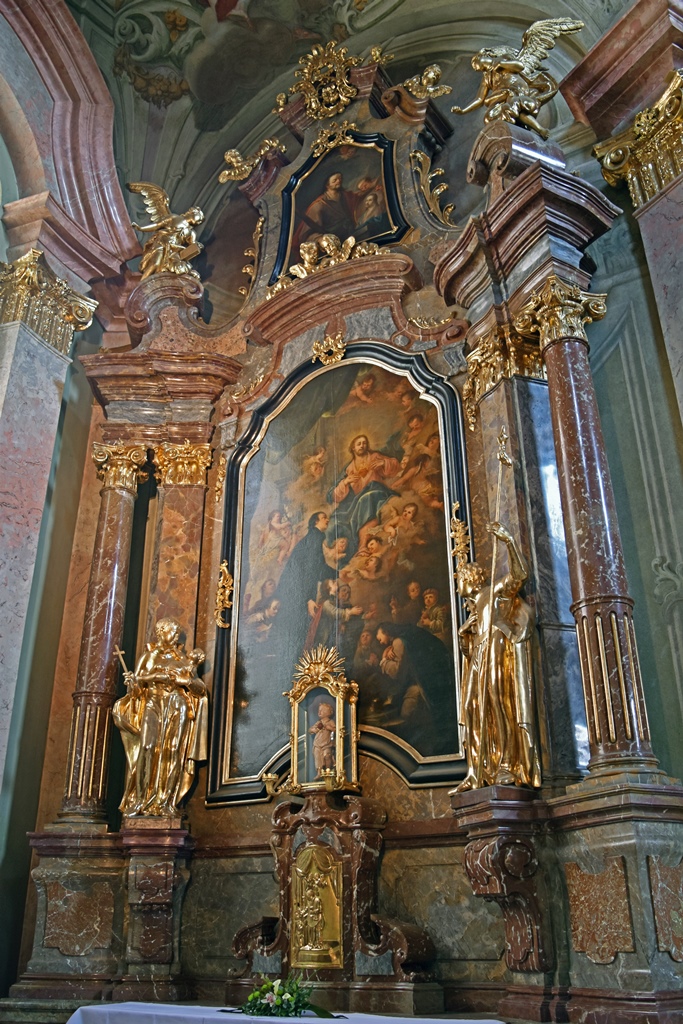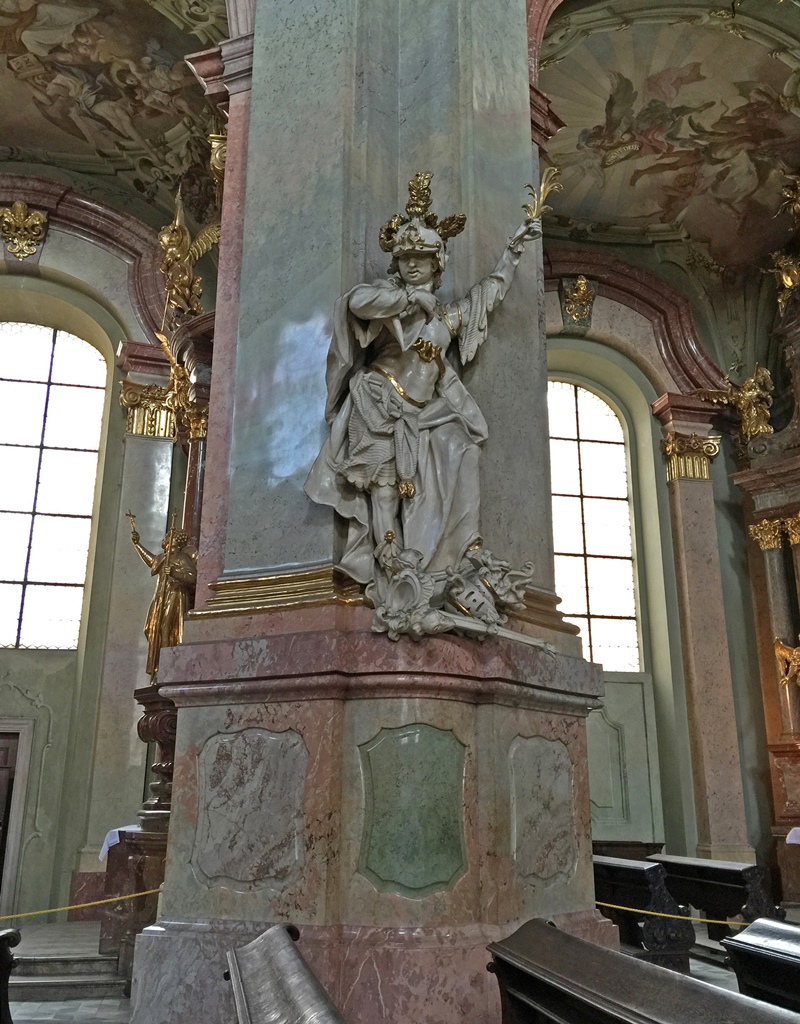St. Nicholas Church from Karmelitská
From the Infant of Prague and the Church of Our Lady Victorious, we continued up the street
(named Karmelitská, undoubtedly after the Carmelite caretakers of the church and the Infant)
toward the big green dome of our next destination, the Church of St. Nicholas. There are actually
three churches in Prague devoted to St. Nicholas (yes, the 3rd-4th Century saint who eventually
evolved into Santa Claus), which can be confusing. One is an understated church in an area of
Prague known as Vršovice, which is well outside the city's historical center, and was not
what we were looking for. There is a second St. Nicholas Church in Old Town Square, which we would
be visiting at a later time (stay tuned). The St. Nicholas Church we were headed toward is the
main parish church of Prague's Little Quarter, or Malá Strana, and is the opposite of
understated, as you will see.
The present St. Nicholas Church was mostly built in the 18th Century, after a decision was made in
the late 17th Century to rebuild a previous Gothic parish church (also devoted to St. Nicholas)
which had occupied the site since 1283.
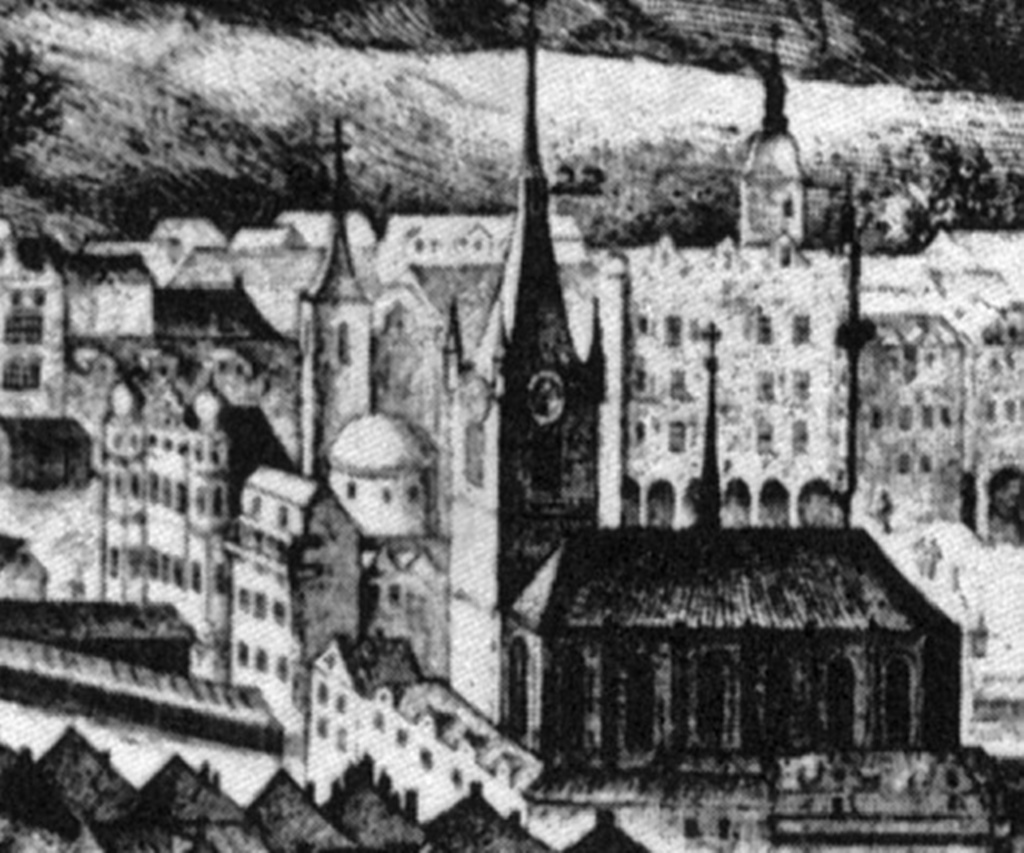
Gothic St. Nicholas Church, 1606
The Jesuits (who by this time were running the church as part of a Jesuit college) approved a design
by an Italian named Giovanni Domenico Orsi in 1673. Building and interior decorating took about 100
years, passing through three generations of architects from a family called Dientzenhofer. Work was
completed just in time for the Jesuit order to be abolished by Pope Clement XIV, which happened in
1773. The church again became just a parish church in 1775, and it retains this status up to the
present day.
St. Nicholas Church, 1868
Karmelitská led directly toward the church's dome and lone bell tower (both 259 feet tall),
which are at the end of the church opposite the entrance. We turned left at Malostranské
Náměstí to get to where the entrance was. In front of the church was a small square, mostly
full of parked cars. In the middle of the square there was a monument known as the Column of the
Holy Trinity. It was built in 1715 to give thanks for the end of a 1713 plague. It's 66 feet
tall and is made of sandstone. It's populated by figures of the Virgin Mary and saints and
angels.
Holy Trinity Column and St. Nicholas Church
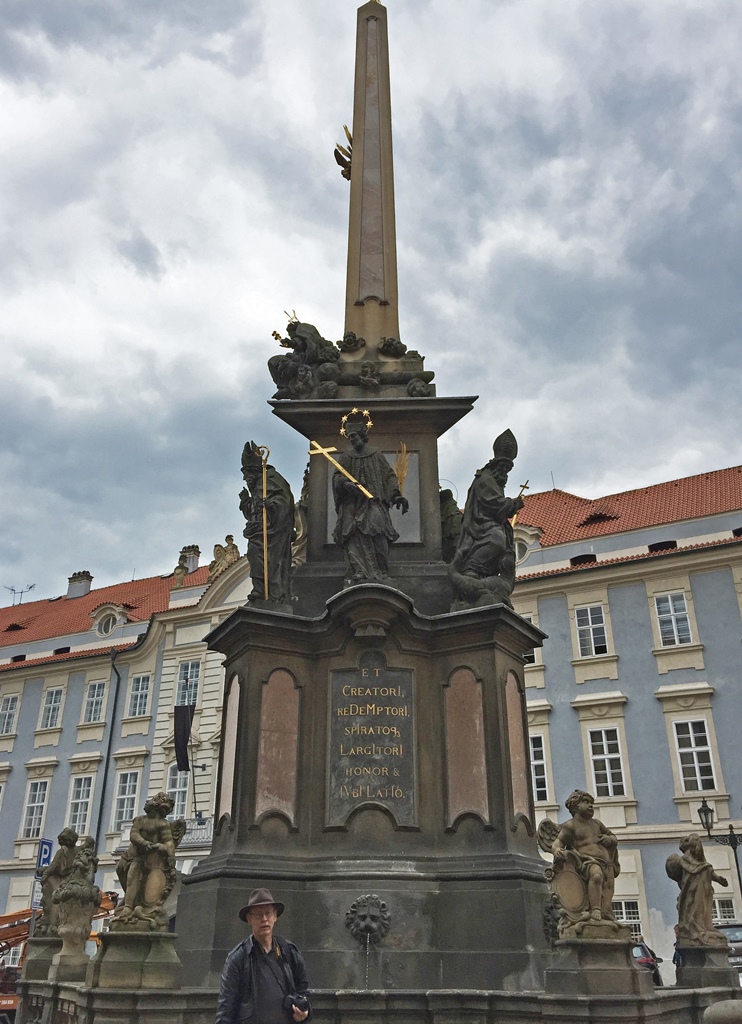
Bob and Column of the Holy Trinity
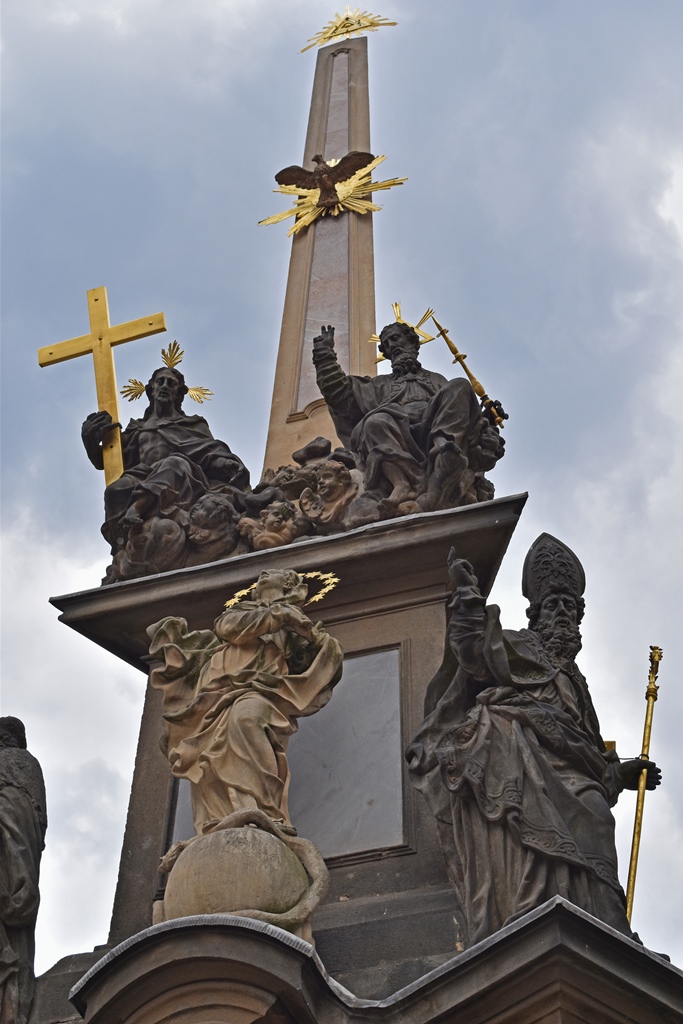
Column of the Holy Trinity (1715)
We made our way back through the parked cars (some familiar makes, some less so) to the front
of the church. The façade, completed in 1710, is fashionably baroque, and is covered with
several figures of saints, with St. Nicholas occupying the place of honor, at top center.
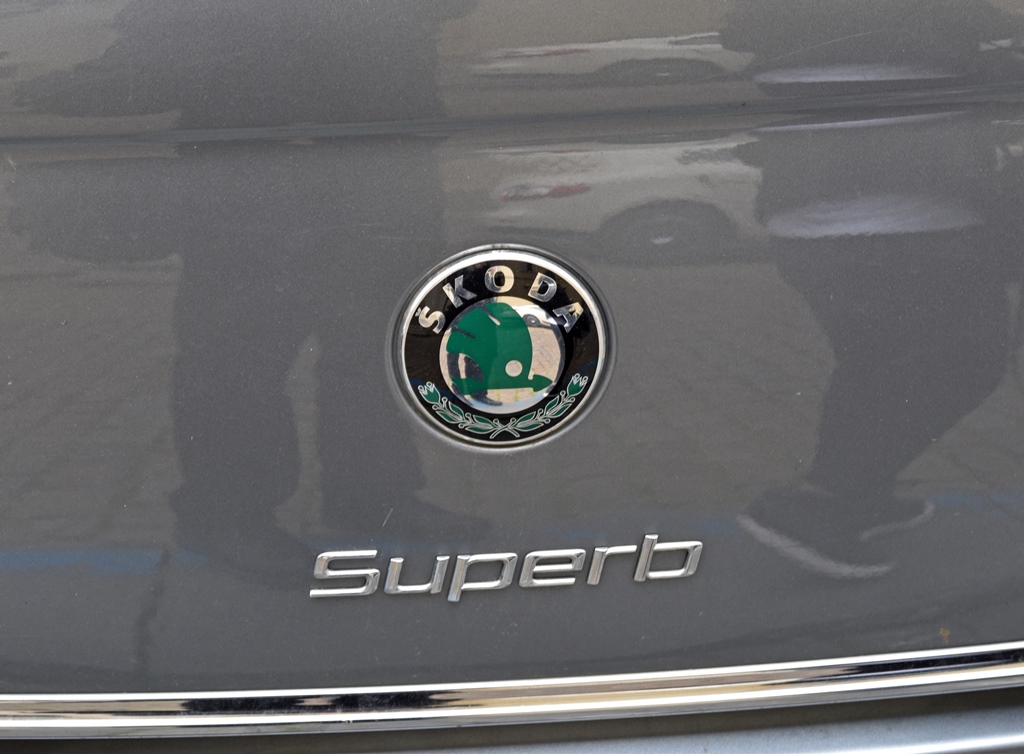
Skoda Superb Sedan
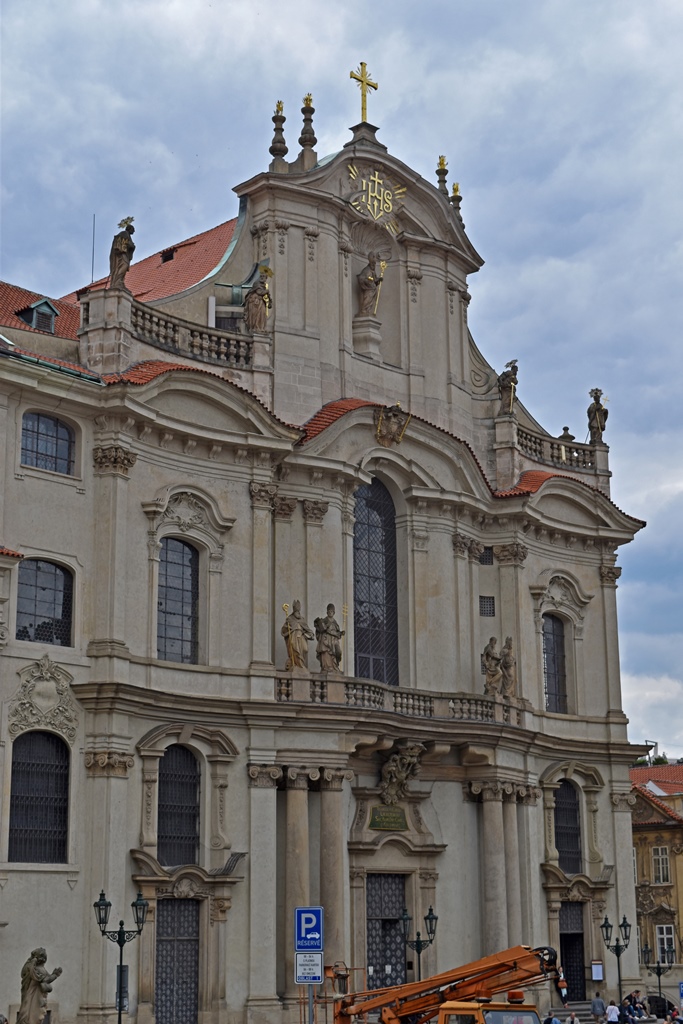
St. Nicholas Church
But when it comes to baroque, there isn't much that can compare to the inside of this church.
We climbed a short stairway to the entrance, paid the small admission fee, and were hit in
the face with baroqueness.
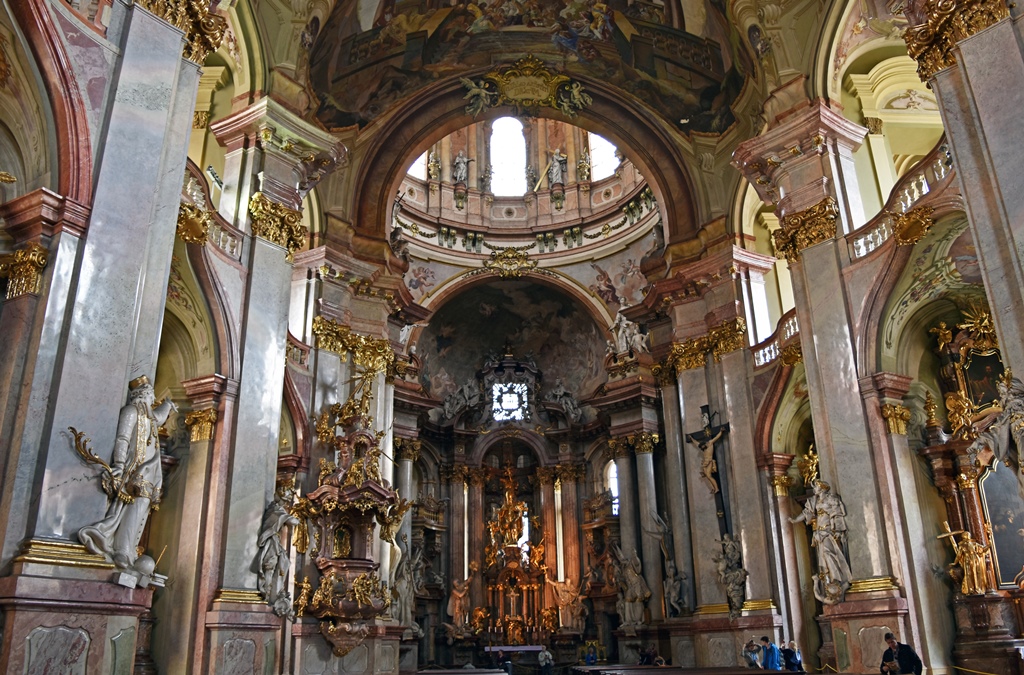
Inside the Church
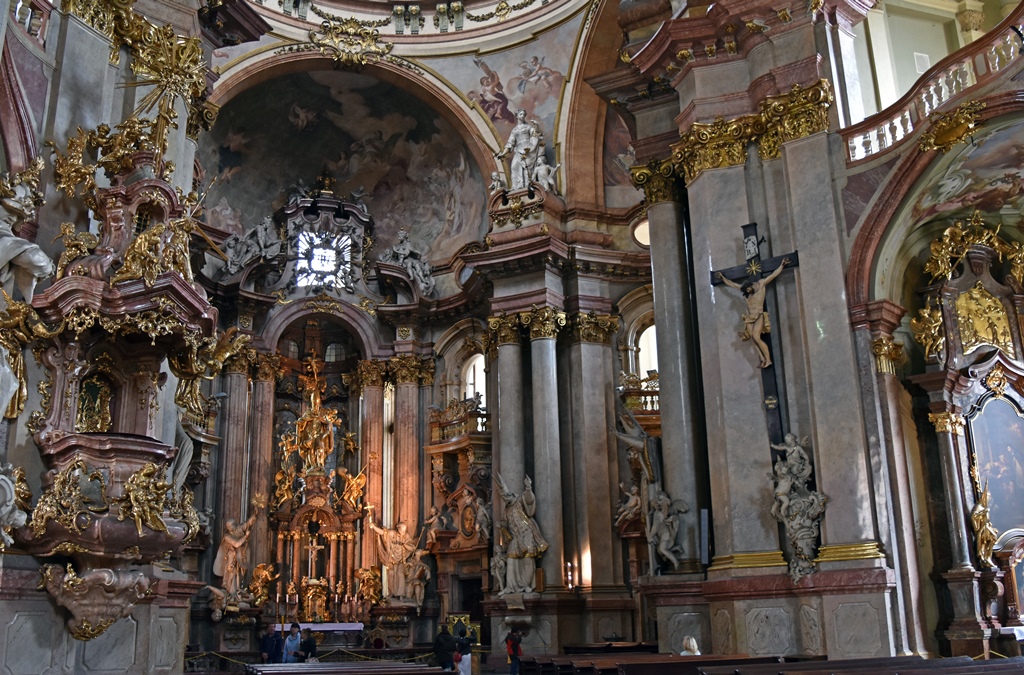
Inside the Church
Inside the Church
The St. Nicholas Church is sometimes called "the most impressive example of Prague Baroque",
and this is easy to believe. With ornamentation found in every corner, it's hard to know where
to begin, but we decided to start with the main altar in the front. The altarpiece is covered
with several gilded figures, but again the top center is home to a figure of St. Nicholas.
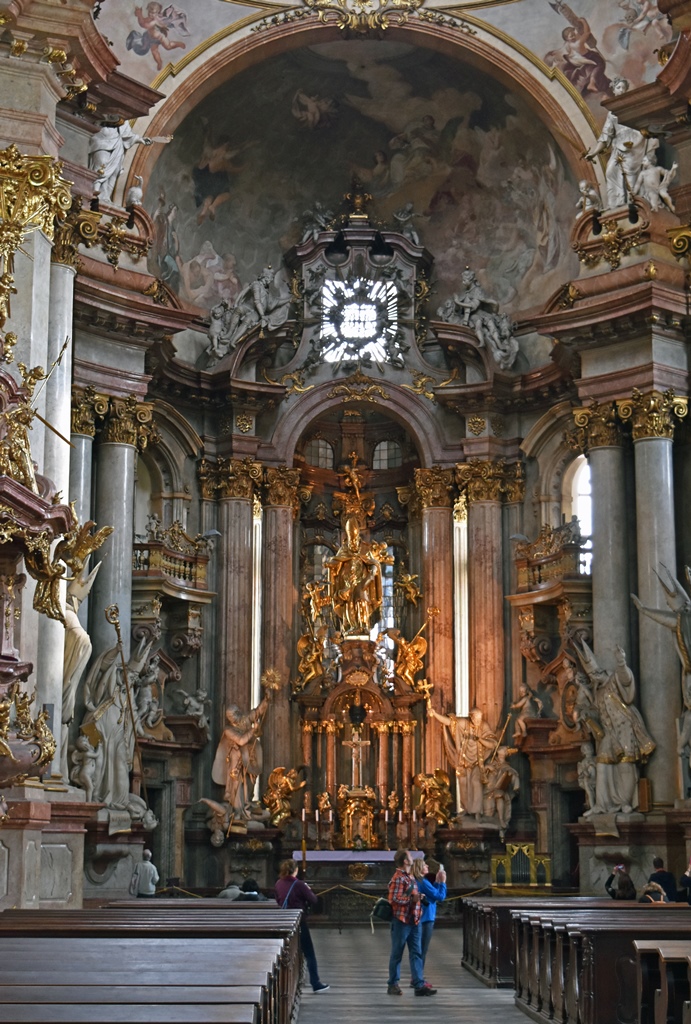
Main Altar
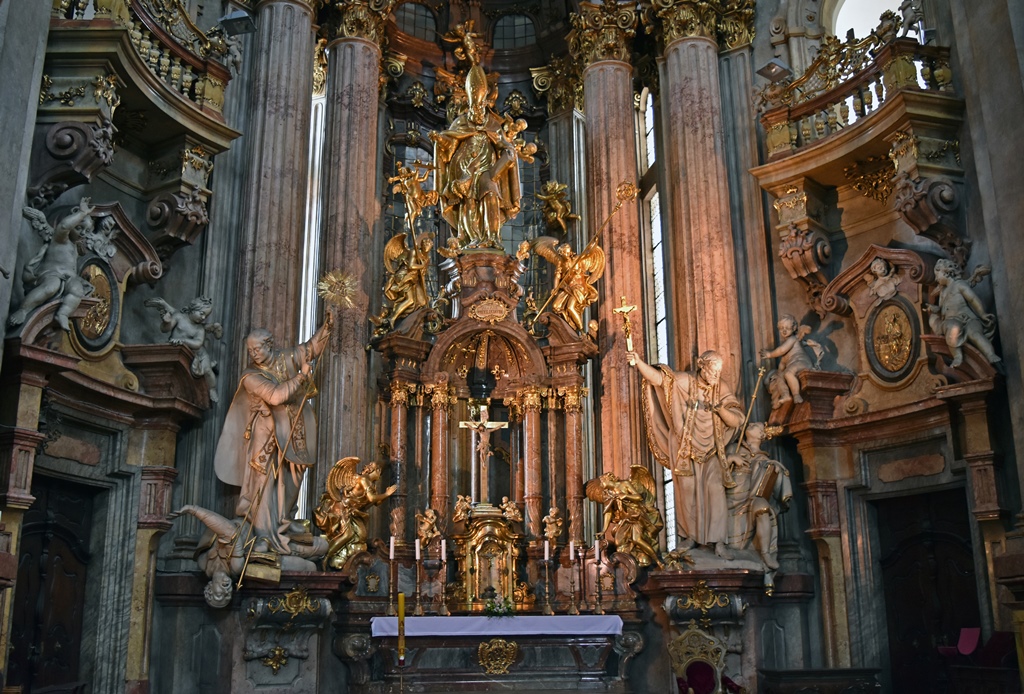
Main Altar
Directly above the area in front of the main altar is the church's dome. The dome is 65 feet
across and is covered with a fresco by František Xaver Palko, called The Celebration of the
Holy Trinity.
The Dome
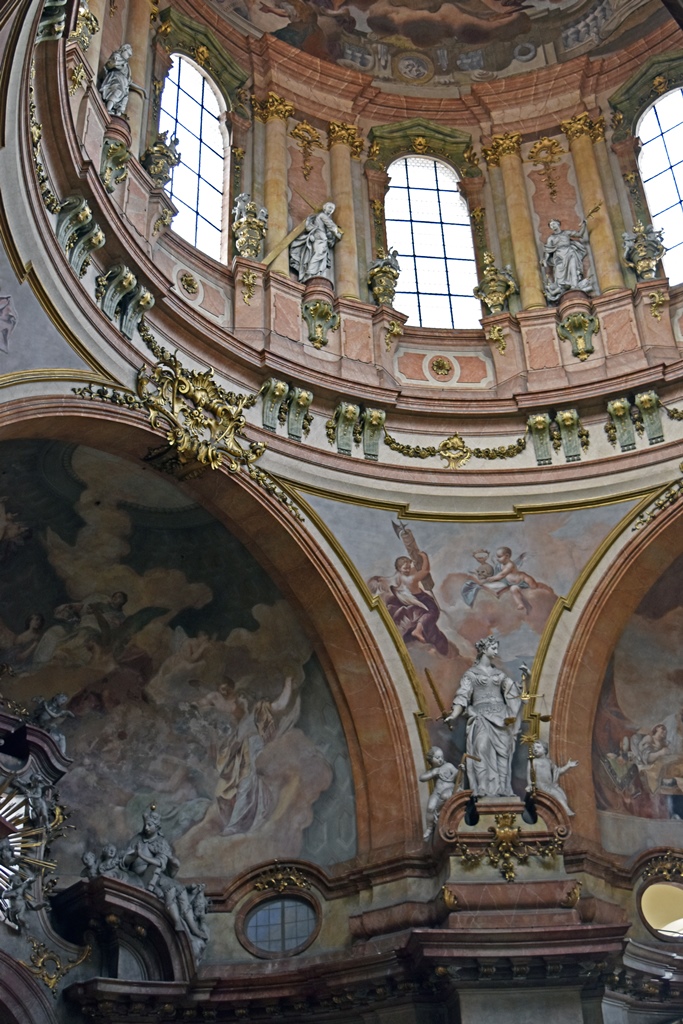
The Dome
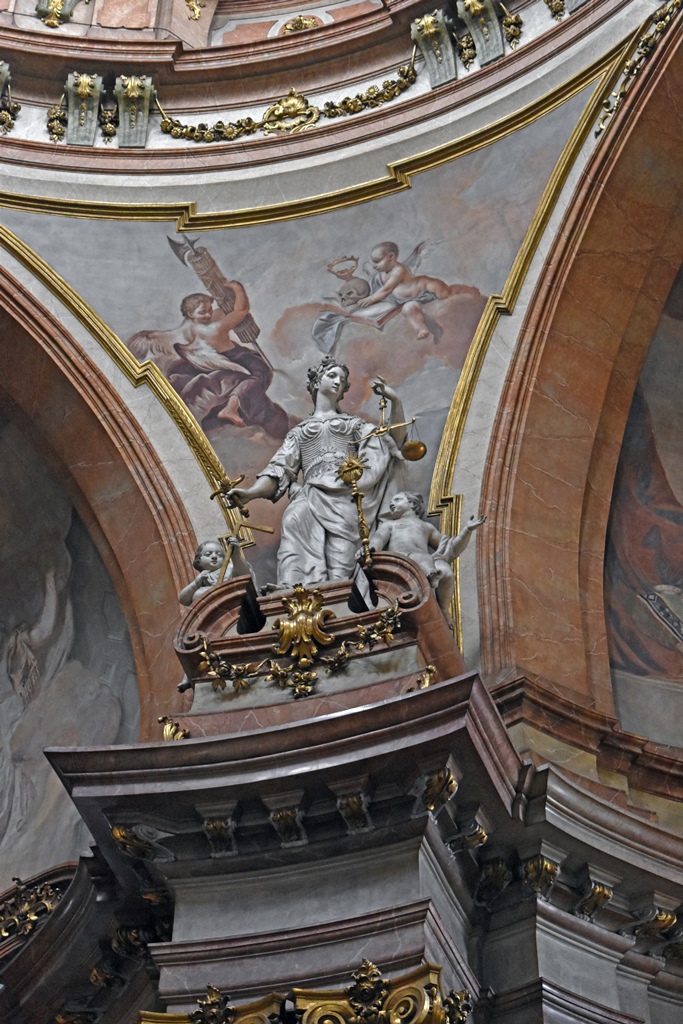
Statue of Justice
The ceiling above the nave has a fresco of its own, this one called The Apotheosis of St.
Nicholas, done by Johann Lukas Kracker in 1760.
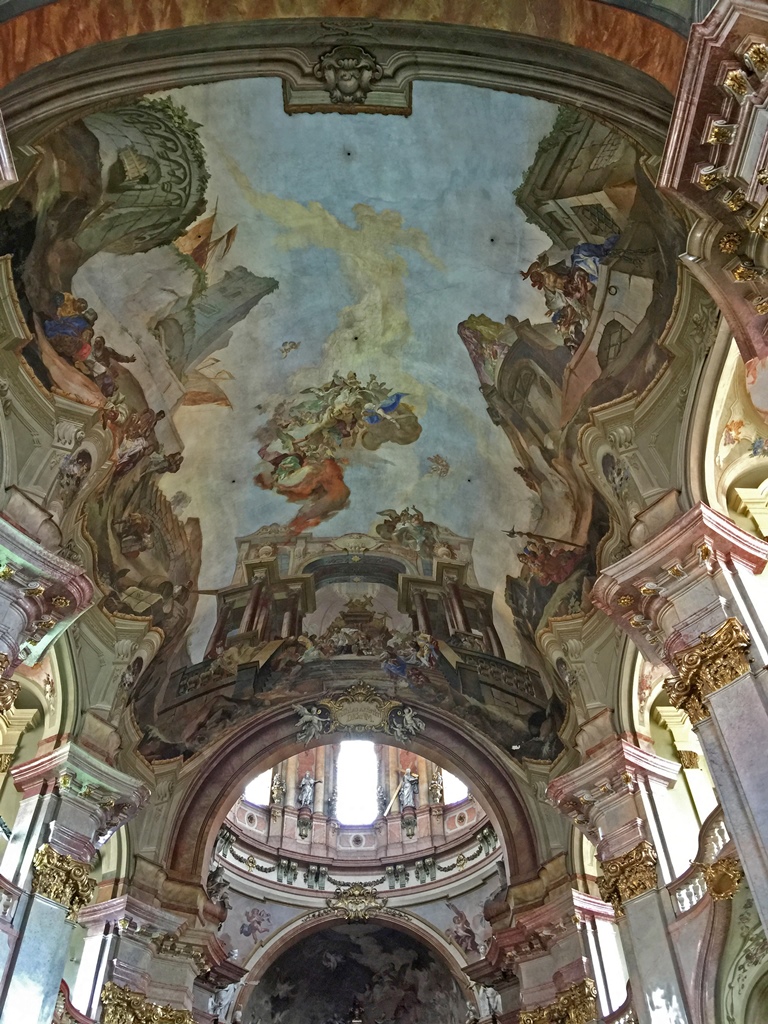
Ceiling - The Apotheosis of St. Nicholas
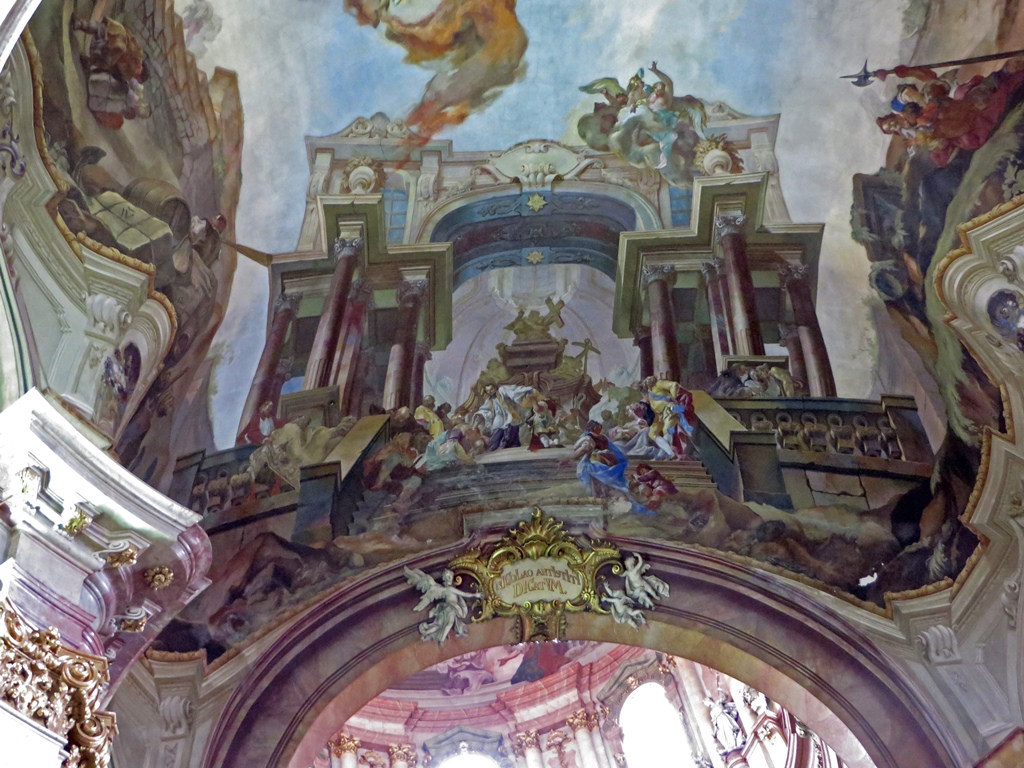
Ceiling Detail
The ridiculously elaborate pulpit was completed by Richard and Peter Prachner around 1765.
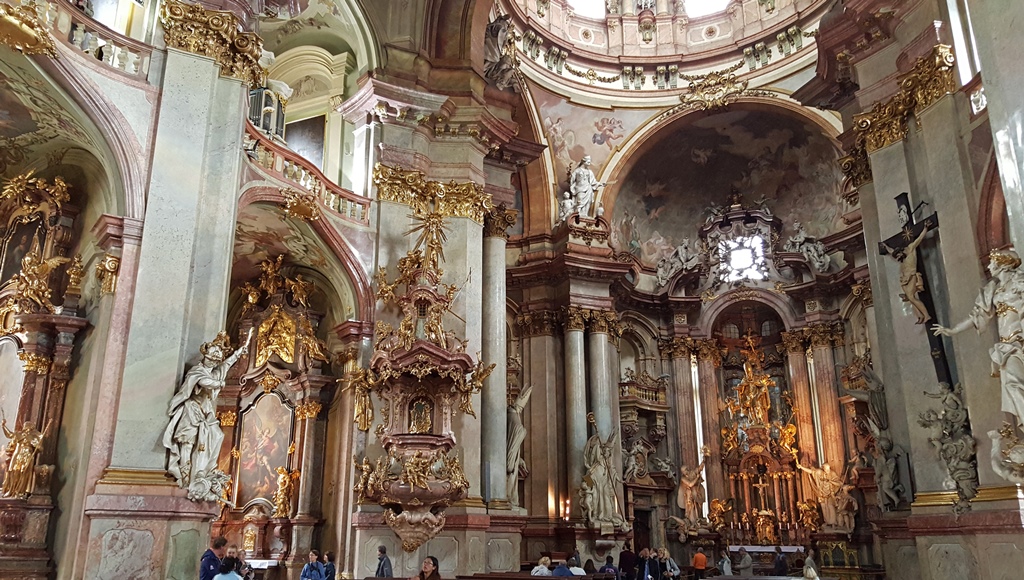
Pulpit and Side Chapels
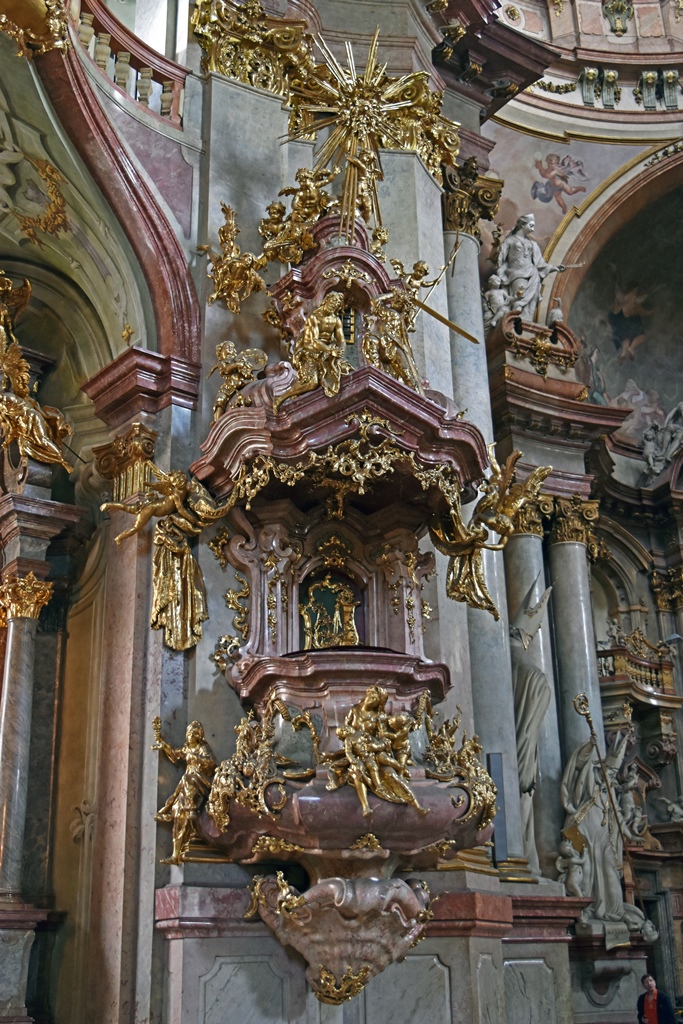
Pulpit, Richard and Peter Prachner
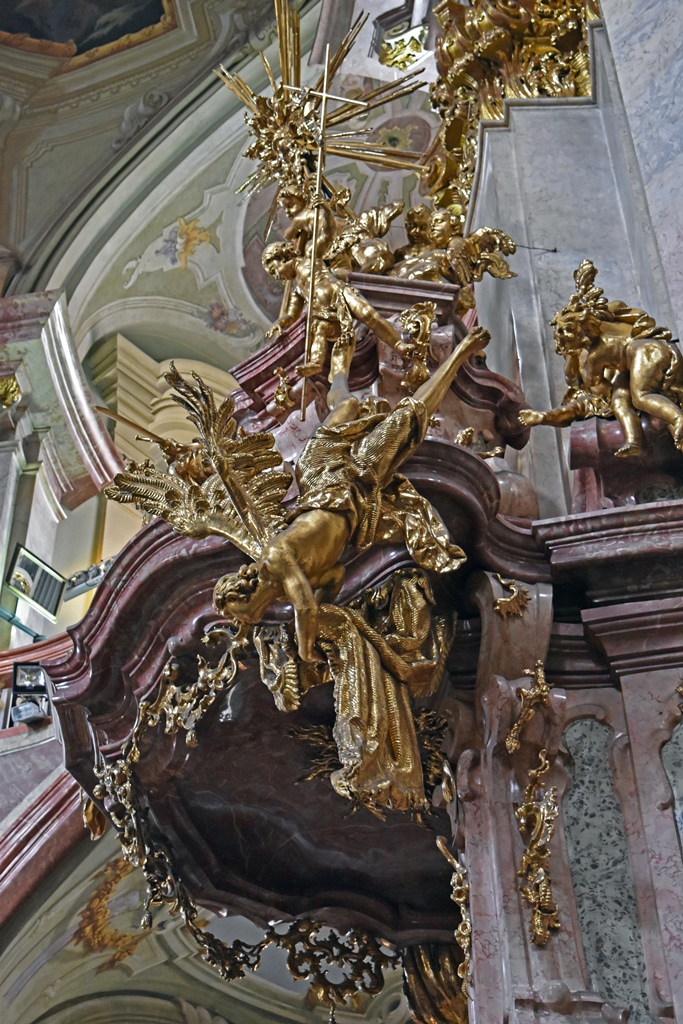
Pulpit Detail

Pulpit and Main Altar
To the left of the main altar there is a door leading to a stairway. The stairway goes up to a
balcony, from which you can get a somewhat different angle on things.
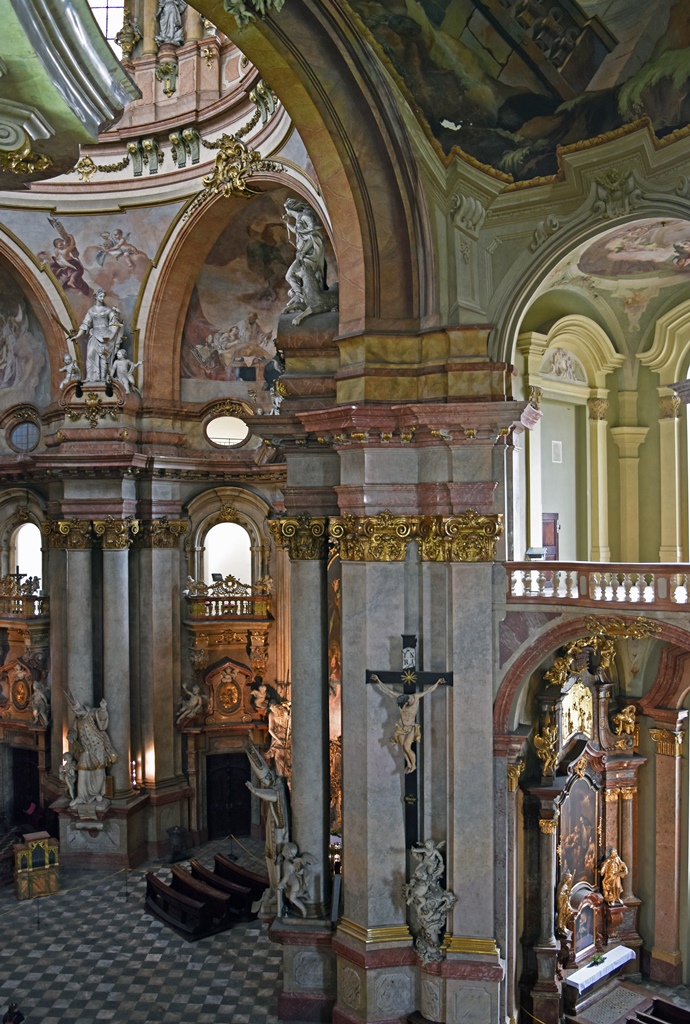
Church from Balcony
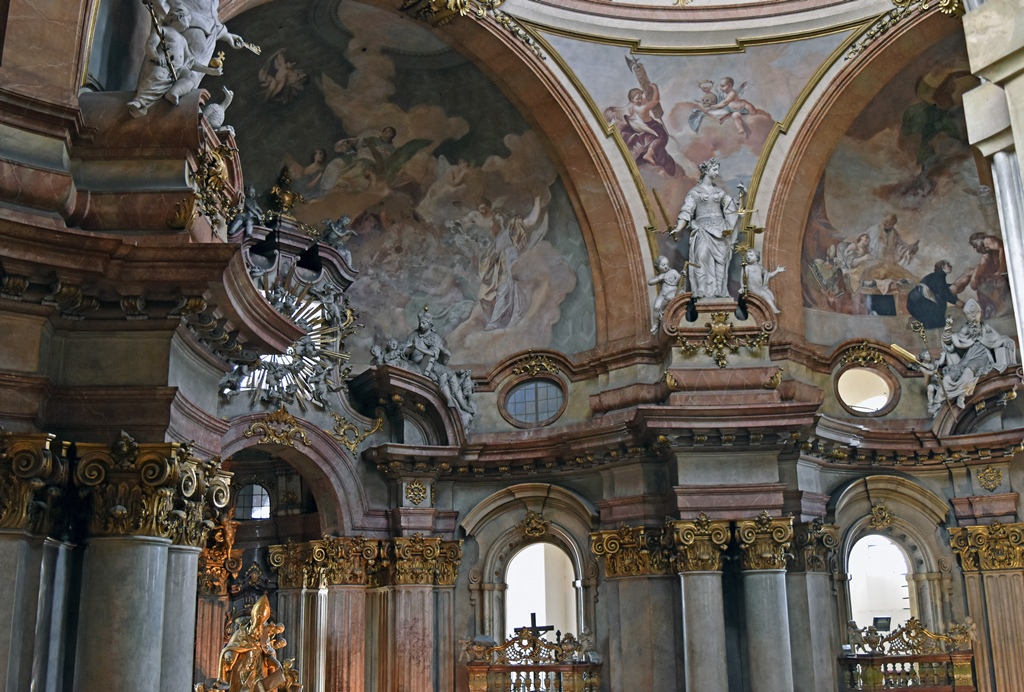
Apse from Balcony
The balcony is at the same level as the church's main organ. The organ is currently awaiting
renovation and is not played (there are secondary organs), but in 1787 it was played by
Wolfgang Amadeus Mozart, who was staying in Prague at the time.
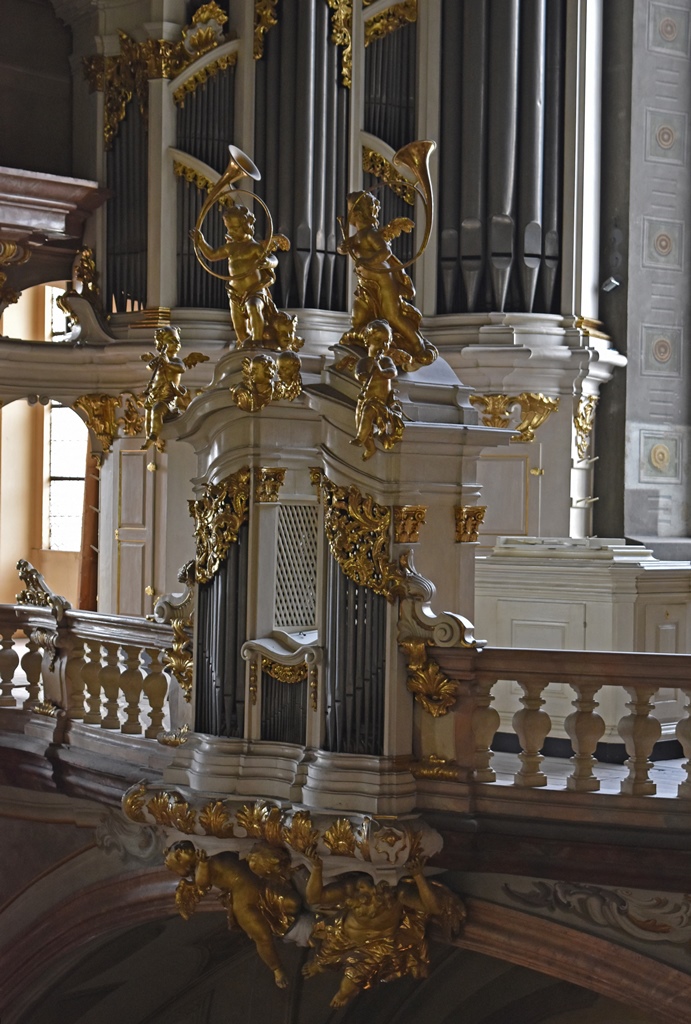
Organ
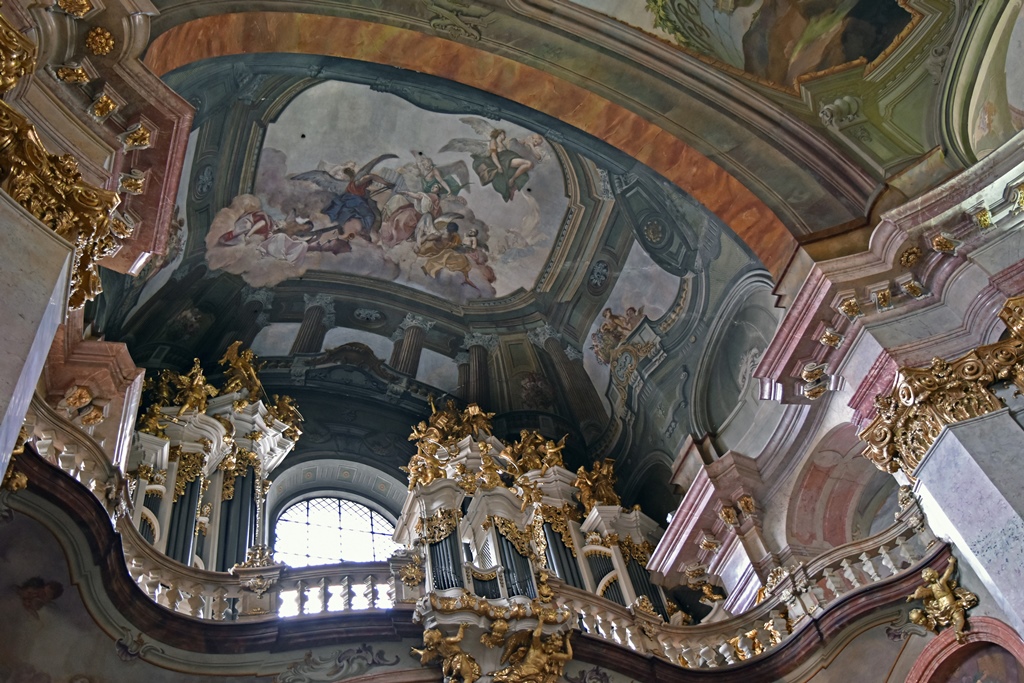
Organ Loft
Back at ground level, the church has several side chapels. The St. Barbara chapel, to the
left of the main altar, was built before the rest of the church, and was the site of its
first masses.
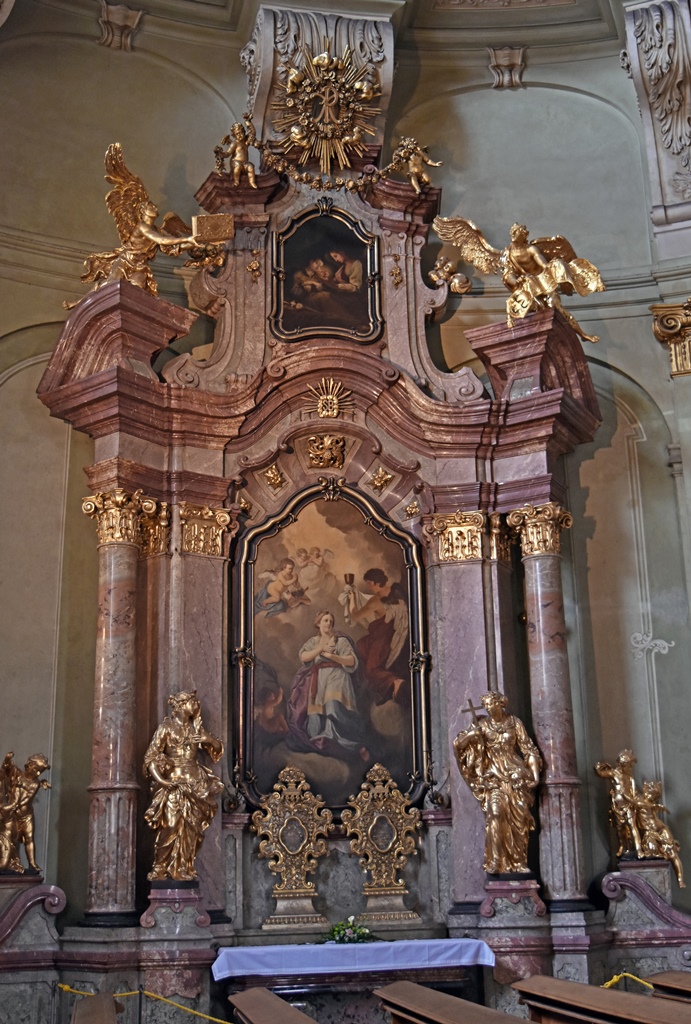
The Celebration of St. Barbara, Ludvík Kohl
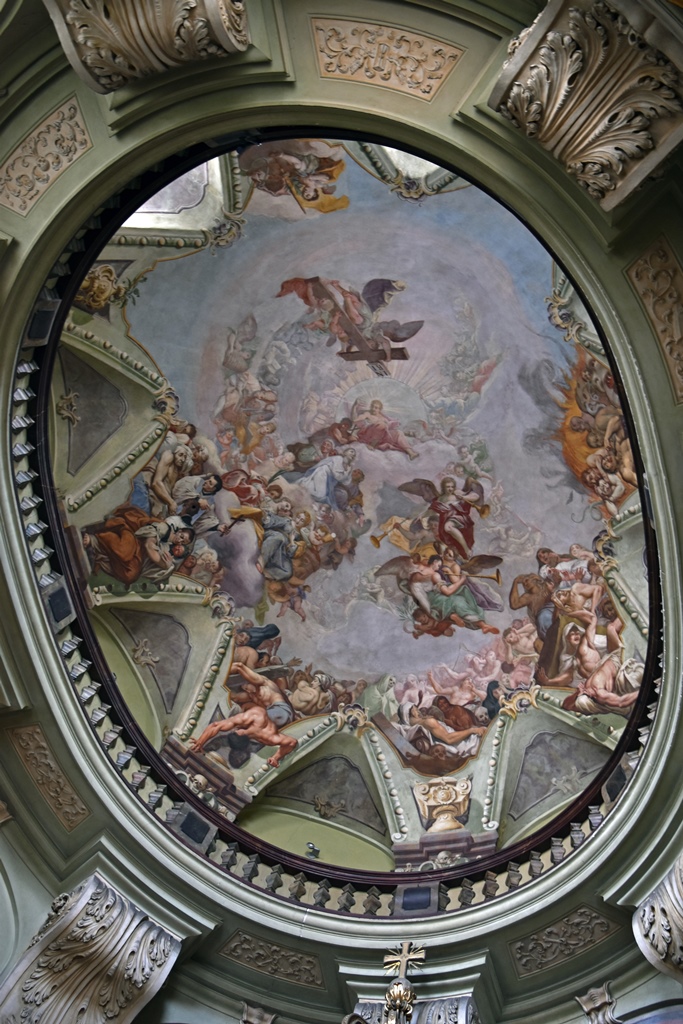
Ceiling, St. Barbara Chapel
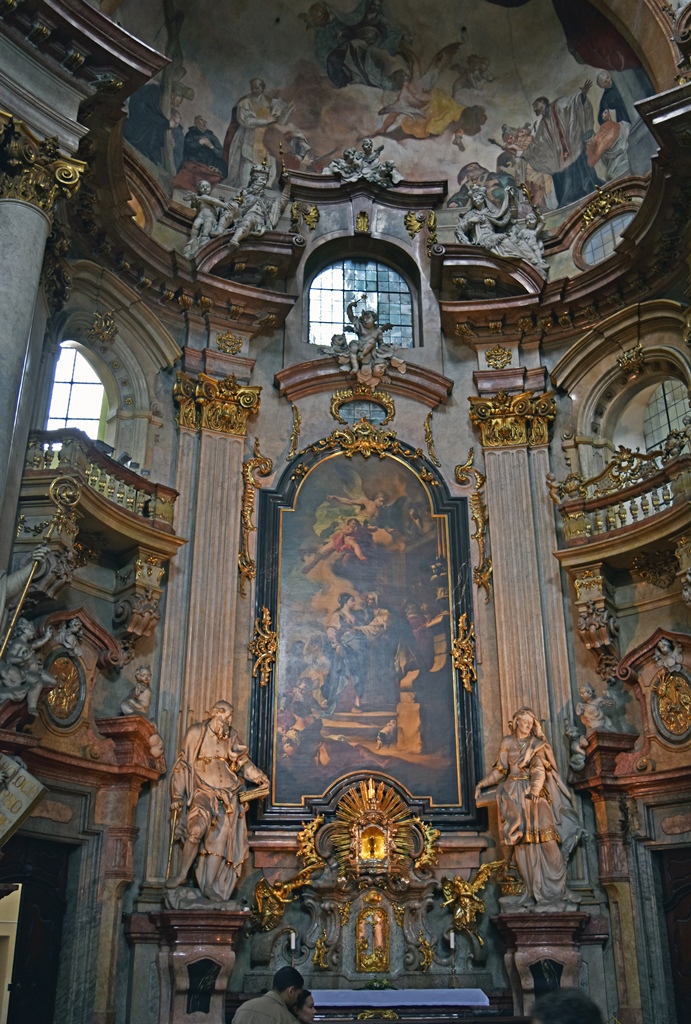
The Visitation of the Virgin Mary, Jan L. Kracker
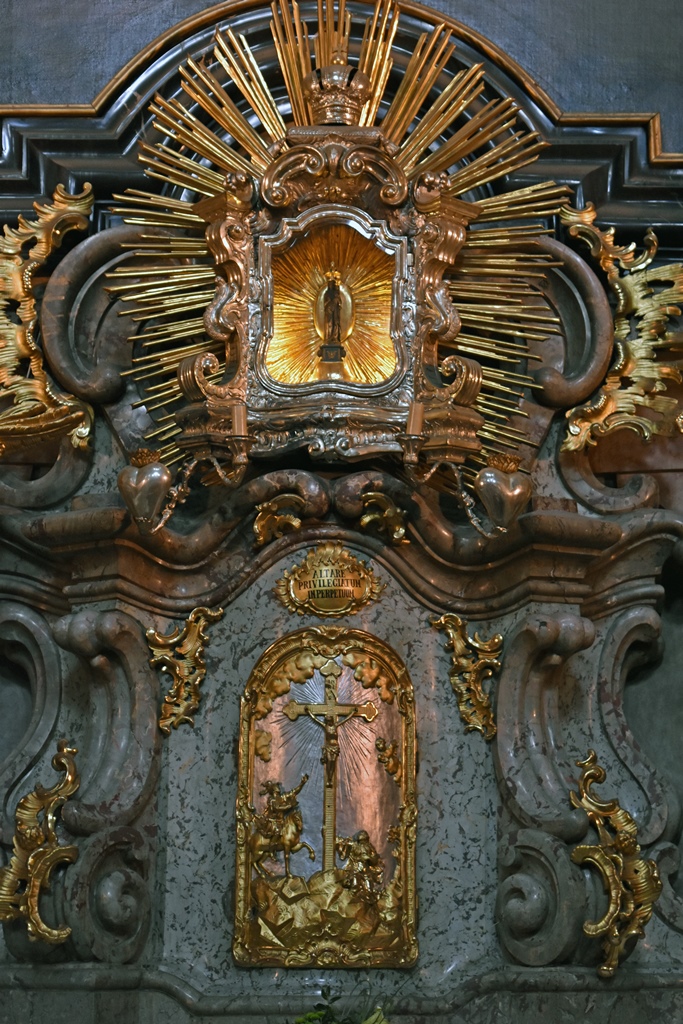
Visitation Altar Detail
St. Alois with the Children Worshiping the Sacred Heart of Jesus, Ignatius Raab
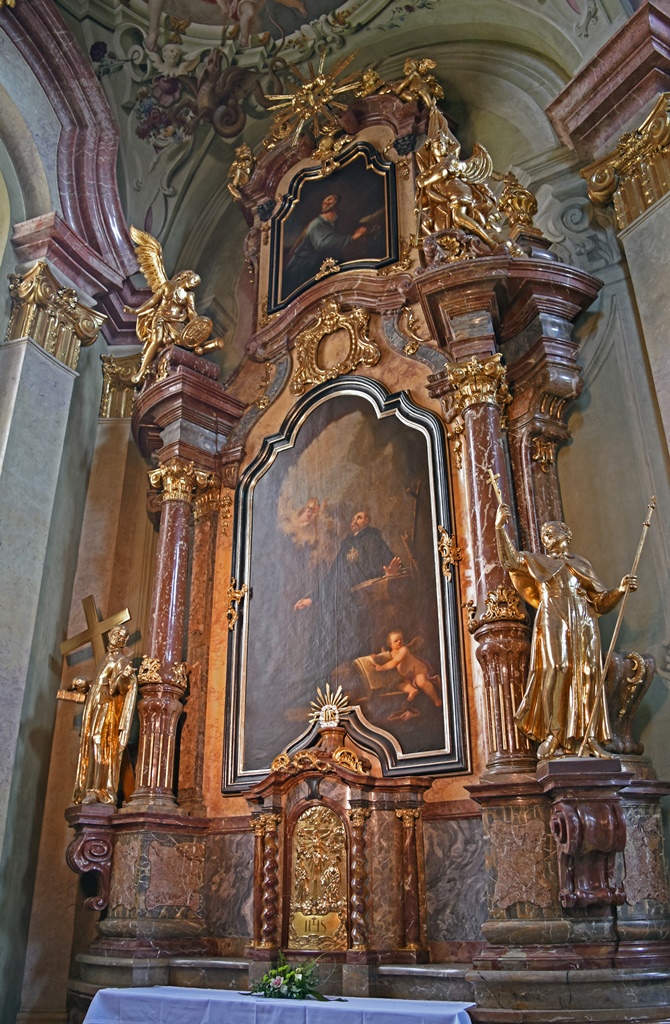
The Vision of St. Ignatius of Loyola, Ignatius Raab
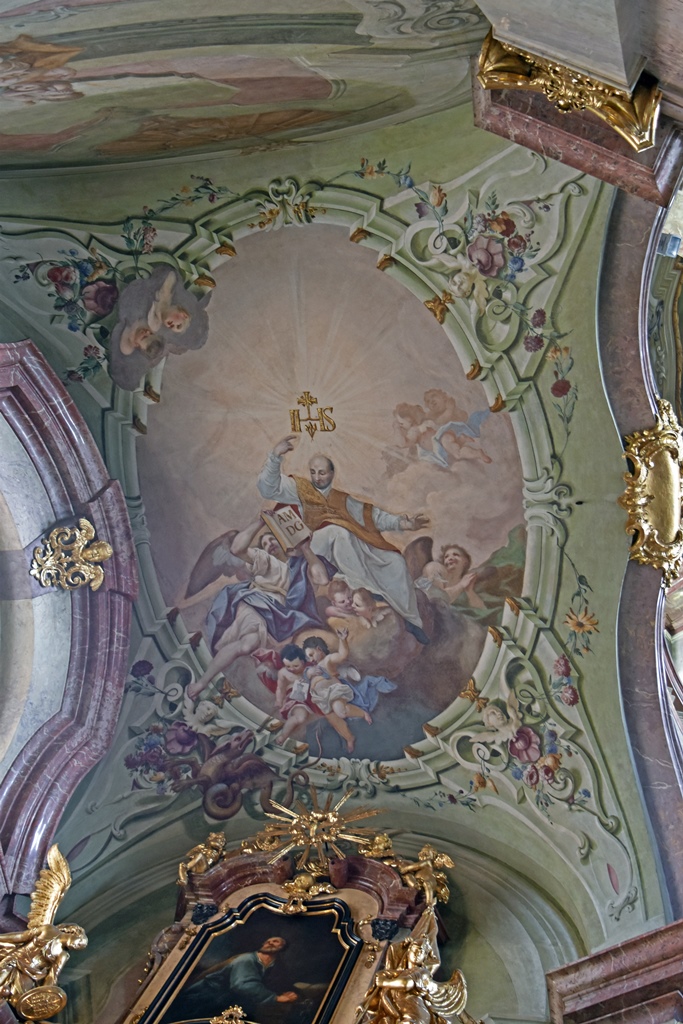
Ceiling, St. Ignatius Chapel
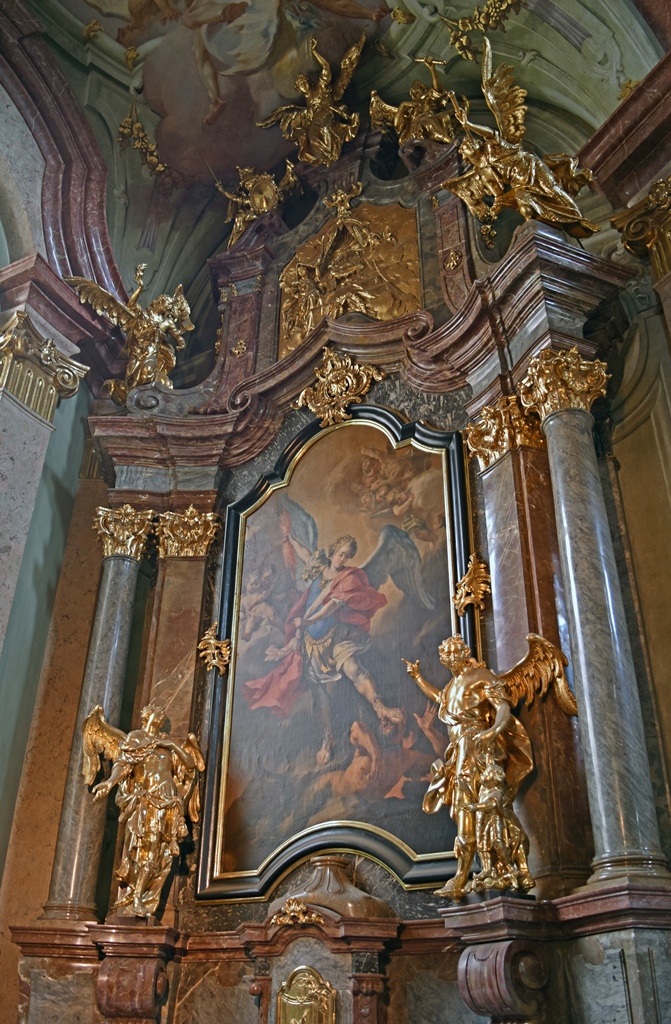
The Archangel Michael Defeating the Devil, Francesco Solimena
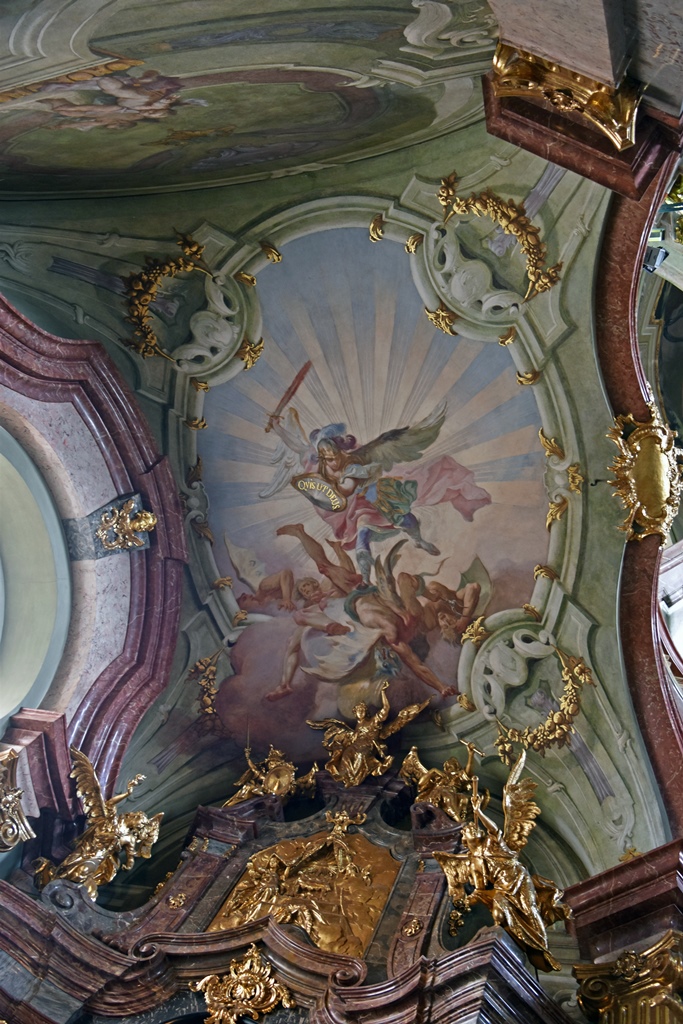
Ceiling, Archangel Michael Chapel
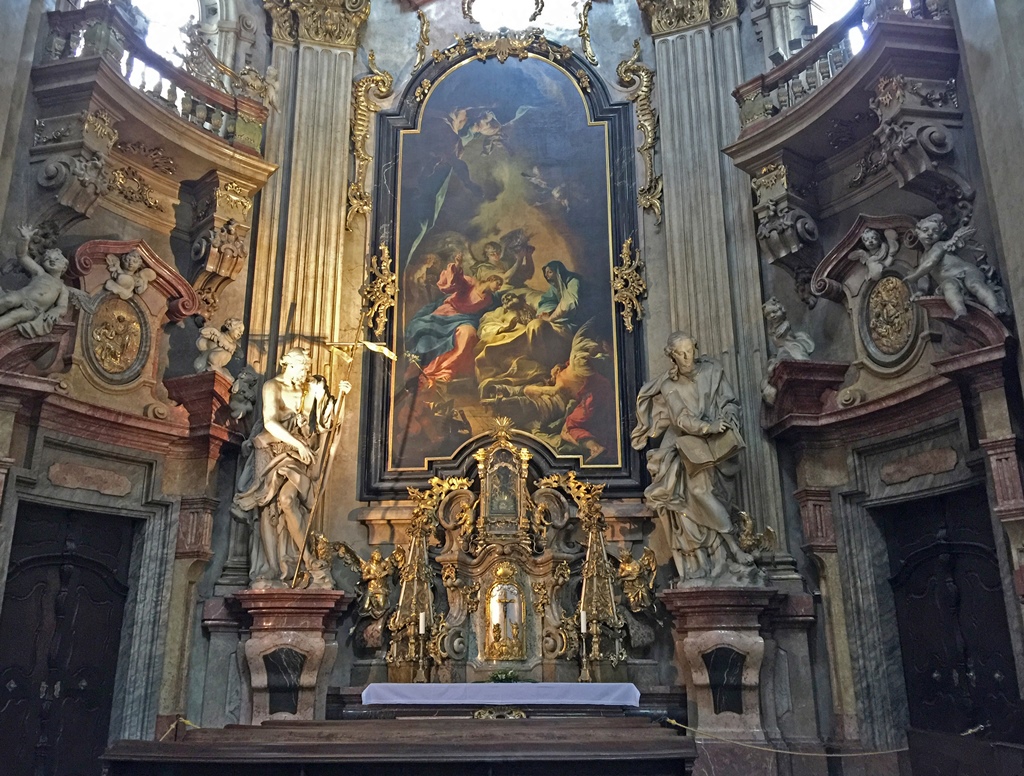
The Death of St. Joseph, Jan L. Kracker
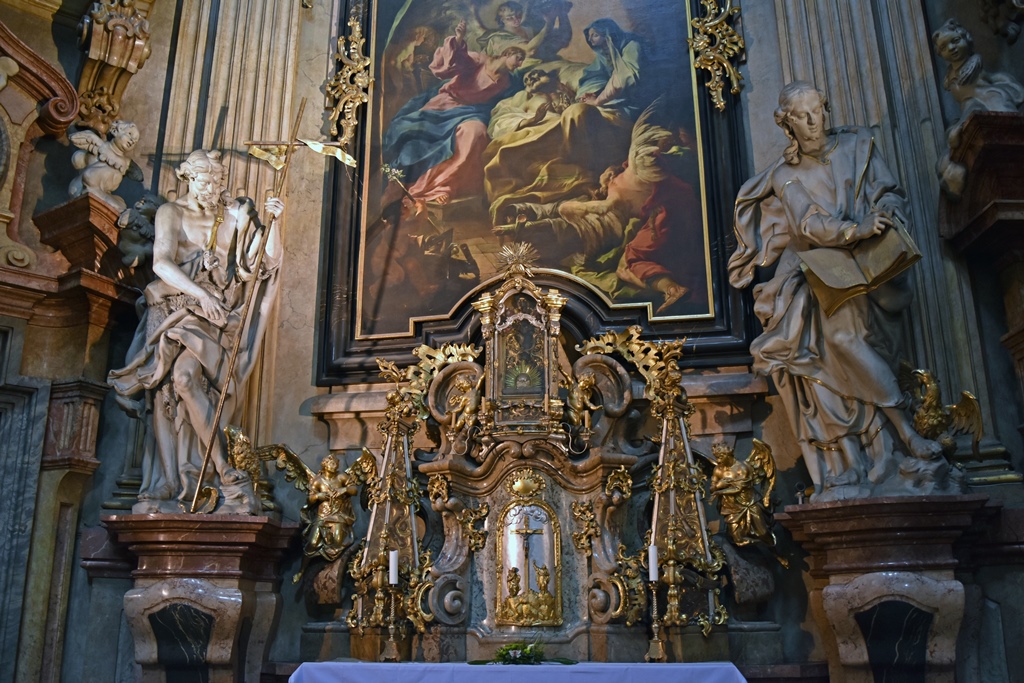
Altarpiece, St. Joseph Chapel
Attached to columns located around the church are statues of saints. The statues are sculpted
from marble, but the columns are not, despite their appearance. They are artificial marble,
fashioned from stucco.
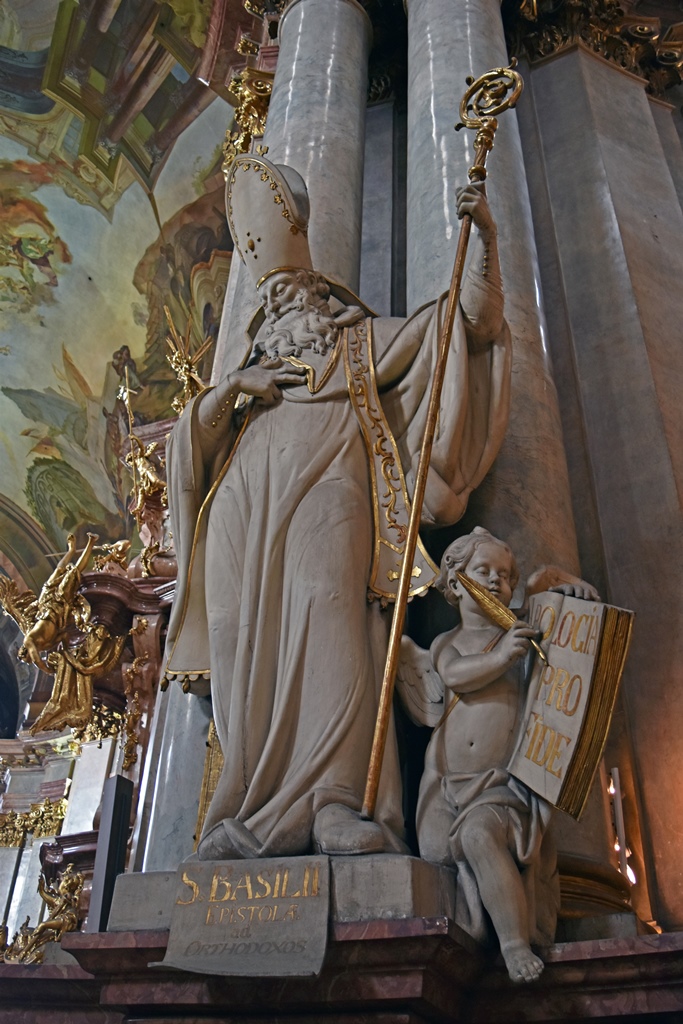
St. Basil
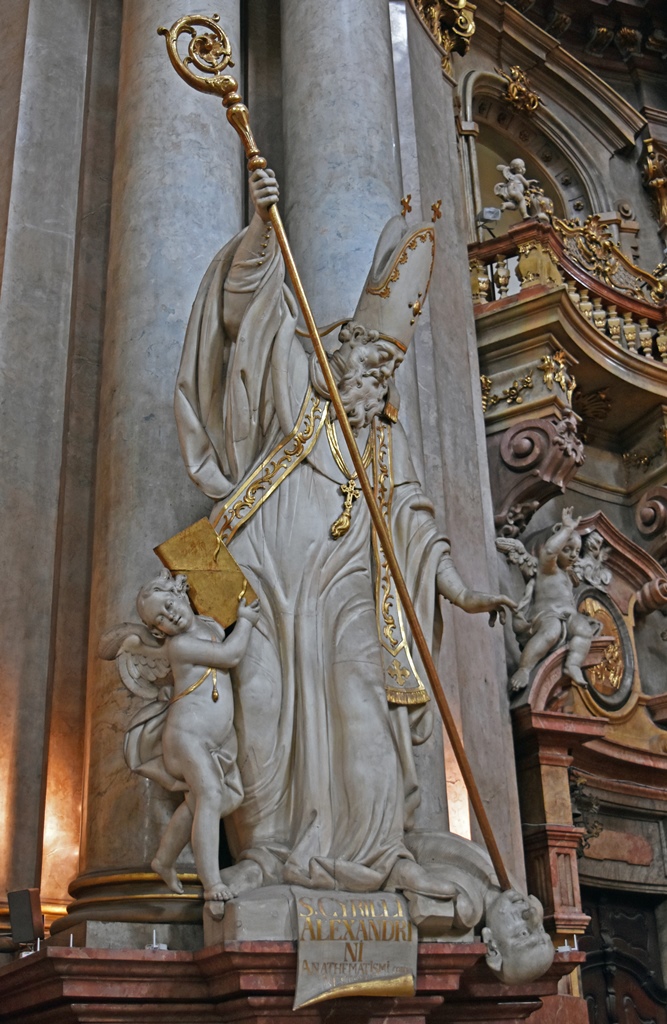
St. Cyril Alexander
Helmeted Figure with Palm Branch
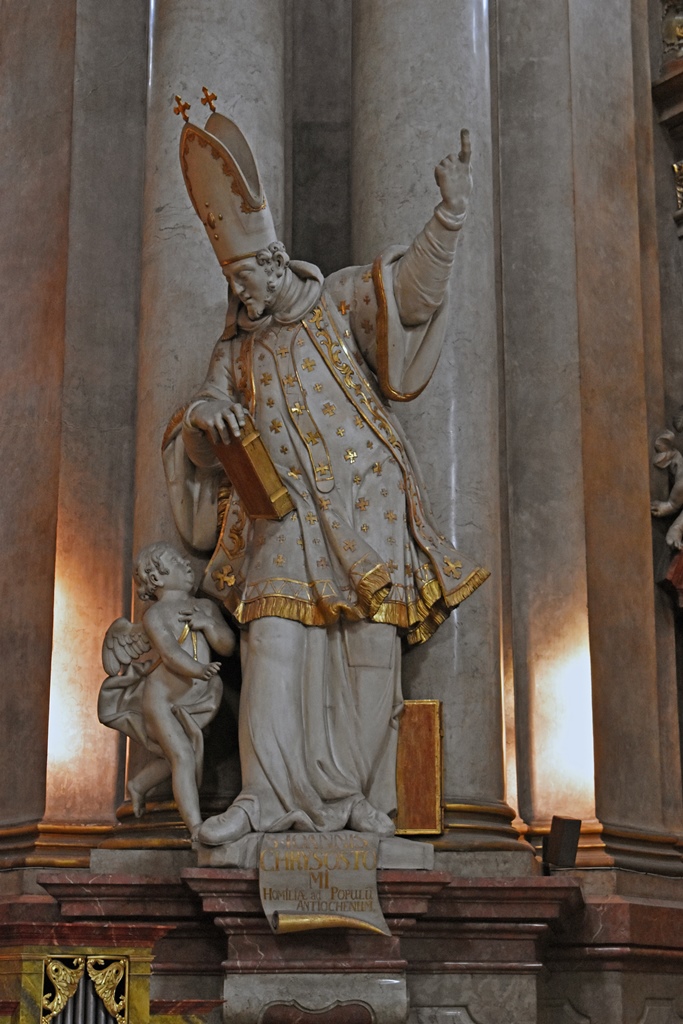
St. John Chrysostom
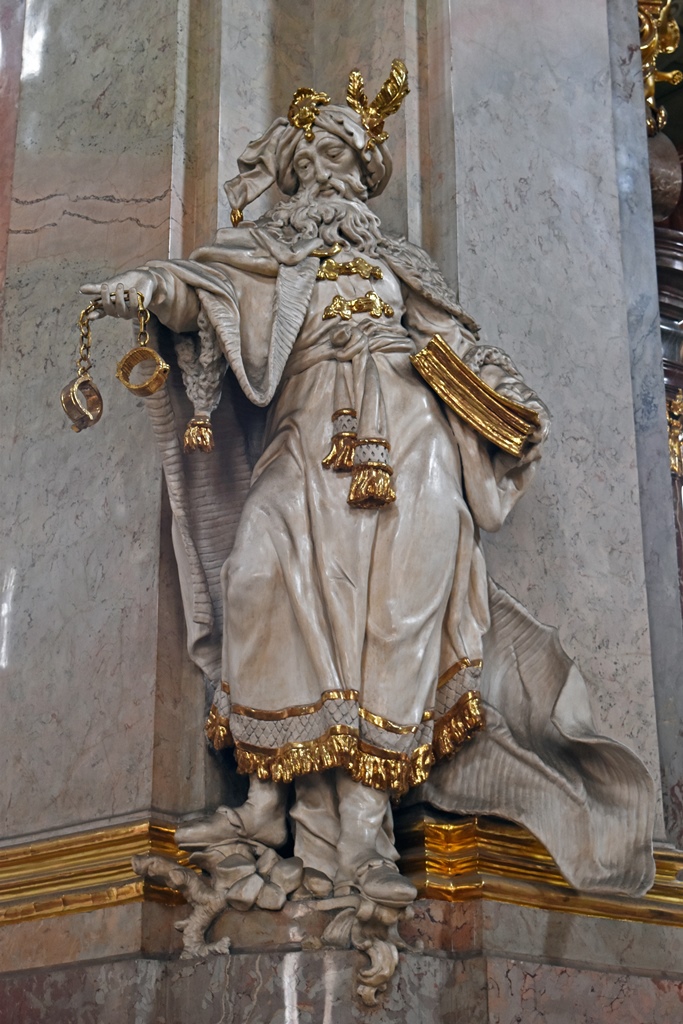
Statue Holding Manacles and Book
At this point you might be thinking that we'd had enough churches for one day. But we were
just getting started. Continue to the next page for a look at Prague's St. Vitus Cathedral.

